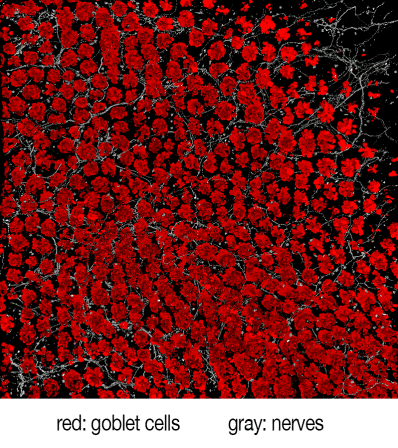
Pain has been long recognized as one of evolution’s most reliable tools to detect the presence of harm and signal that something is wrong — an alert system that tells us to pause and pay attention to our bodies.
But what if pain is more than a mere alarm bell? What if pain is in itself a form of protection?
A new study led by researchers at Harvard Medical School suggests that may well be the case in mice.
The research, published Oct. 14 in Cell, shows that pain neurons in the mouse gut regulate the presence of protective mucus under normal conditions and stimulate intestinal cells to release more mucus during states of inflammation.
Thought-provoking content
In-depth stories on science and medicine



